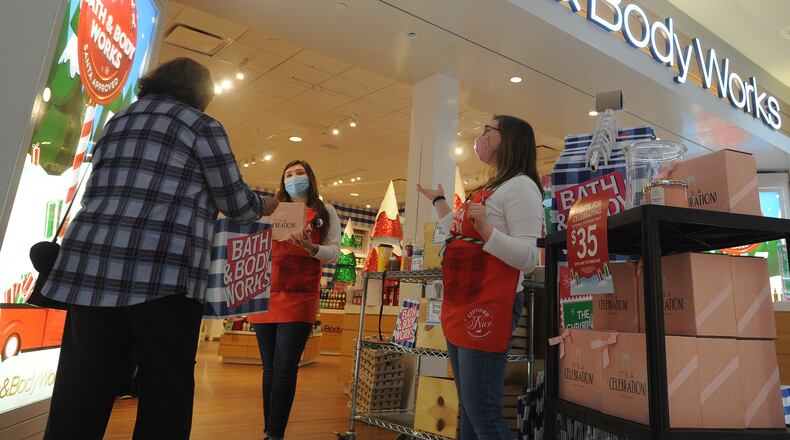“With the pandemic and as vaccines start to roll out, we might see increases in consumer confidence,” said University of Dayton marketing professor Riley Dugan.
The National Retail Federation projected holiday related sales would increase between 3.6% and 5.2% bringing in between $755.3 billion and $766.7 billion Nov. 1 to Dec. 31. Retail sales saw an 8.3% increase or $789.4 billion according to their report.
“The holiday season was better than anyone had guessed,” said Ohio Council of Retail Merchants CEO Gordon Gough. “I will say that the economy is really unique right now.”
Gough said with people going out less they may have had the opportunity to buy more for the holidays. “Maybe you would have went on a trip last fall but you can’t because of COVID, but now you maybe spent more money on the holidays because you had more money,” he said.
Macy’s, along with L Brand’s Victoria Secret, which experienced a 3% decline in sales in 2019, had plans to close some of their stores prior to the pandemic but COVID-19 expedited the process. Macy’s announced early last year its plans to close 125 stores throughout the country by 2023, 45 during 2021 with four of them in Ohio.
The Tri-County Mall location in southwest Ohio will close this year as part of the company’s plan to downsize to promote growth. Macy’s plans to move away from debilitating shopping malls while opening smaller retail locations.
“Anytime you’re basically saying we’re going to have a smaller footprint, that’s kind of a sign of defeat in many respects,” Dugan said.
On the flip side, Gough said that companies moving to have a smaller footprint even before the start of the pandemic is simply moving from one house to another.
“I think all retailers were looking at their online versus brick and mortar footprint and making corrections. Maybe I don’t need as many stores because my online traffic continues to grow. What may have happened in 2020 to some retailers is that accelerated,” he said.
Department stores like J.C. Penney have served as anchor tenants in shopping malls, but with many shoppers opting for the customer service provided by boutiques and the convenience of online shopping, the need for physical locations have seemed to dwindle.
As department stores are pushed out Dugan said malls should reconsider department stores as anchor tenants.
“I think malls are going to need to start getting more creative…you could start thinking about gaming centers, bowling alleys, maybe even a micro-breweries,” Dugan said.
Having an online presence has been beneficial throughout the pandemic but it also poses a significant threat to physical locations for retailers, especially department stores. Dugan predicts e-commerce will continue to grow but will depend largely on the condition of the economy.
The NRF reported online and non-store sales were up 23.9% at $209 billion during the holiday season.
With vaccine distribution underway, this could be the last hope for some stores to have shoppers return to their physical locations. But that could be a ways away as the vaccine is currently being given to front liners in health care and the elderly.
About the Author

